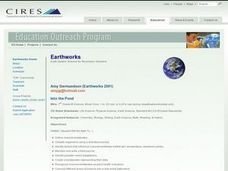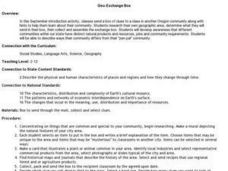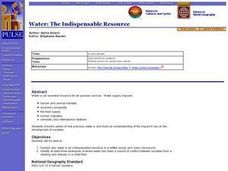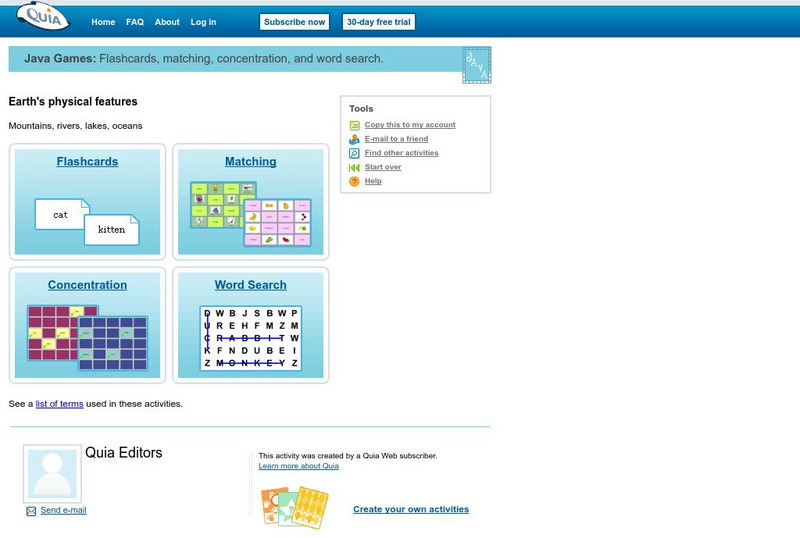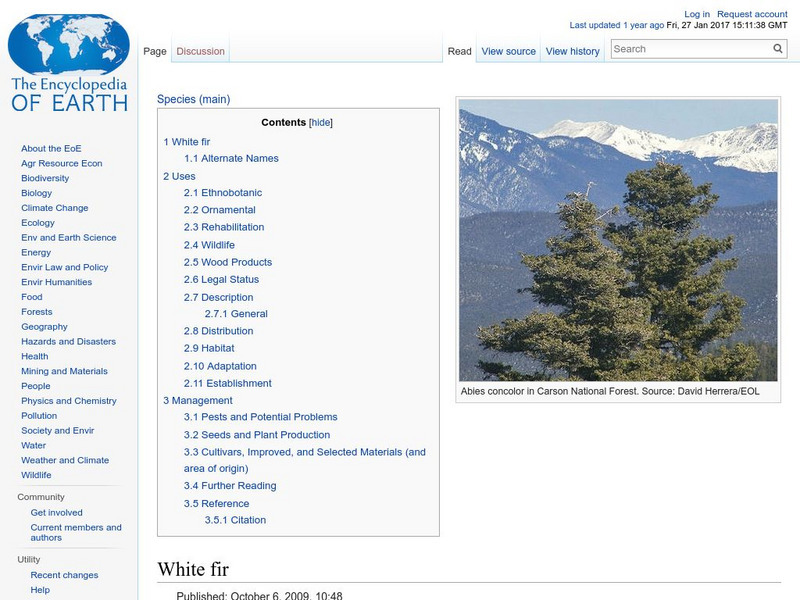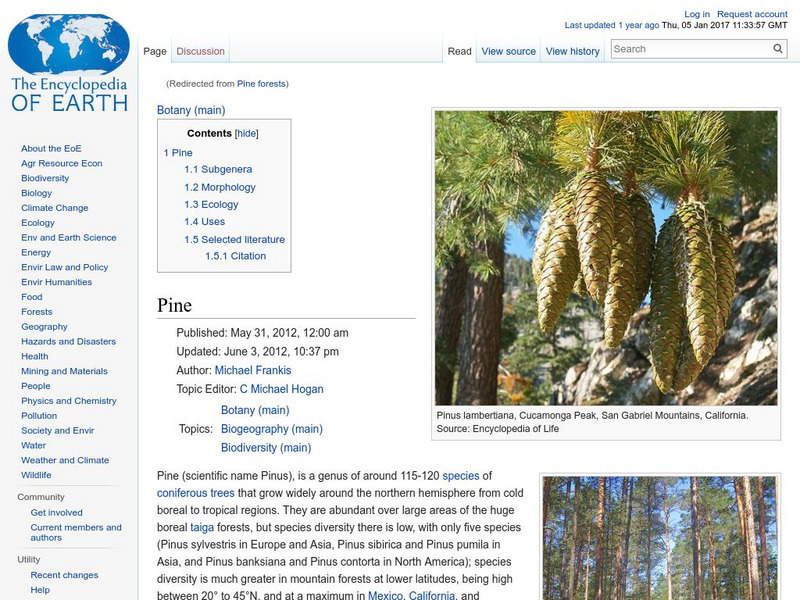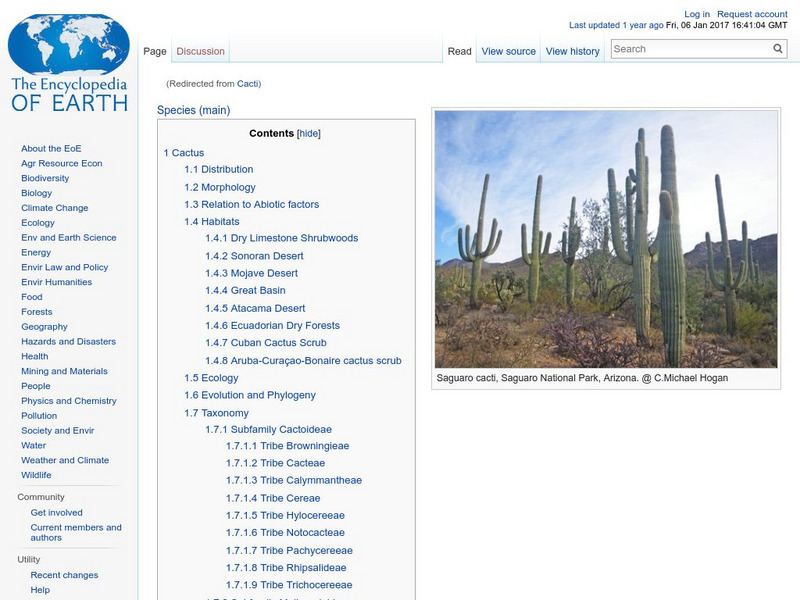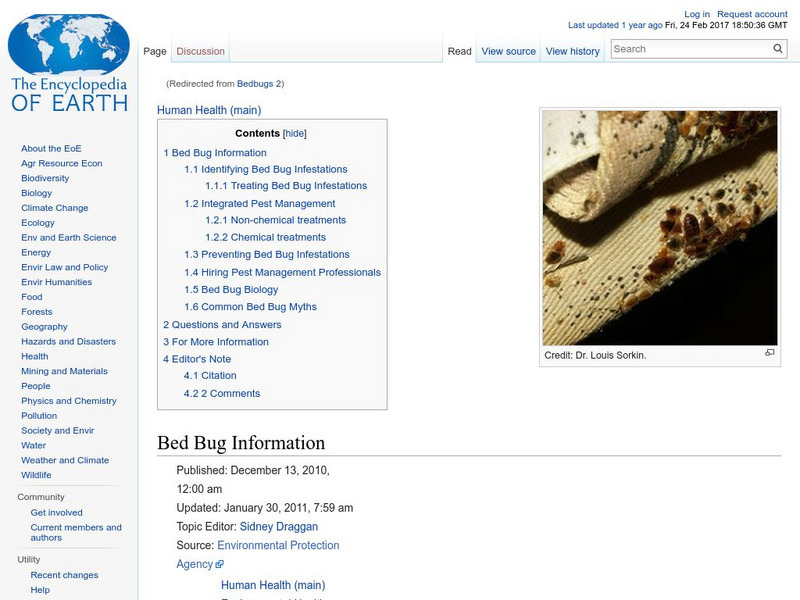Curated OER
Deforestation
Students identify the different tropical rainforests in the world using a map. In this ecology lesson, students describe the different methods of deforestation. They create a memo and present it to class.
Curated OER
Into the Pond
Seventh graders use a pond to explore macroinvertebrates and other organisms. They use a dichotomous key to classify the organisms and maintain a journal recording their findings.
Curated OER
Solving Saturn's Mysteries
Middle schoolers study the Cassini spacecraft and its travel to Saturn. They discover the results of the space mission and examine images of Saturn that Cassini sent back.
Curated OER
Geo-Exchange Box
Students send a box of clues to a class in another Oregon community along with hints to help them study about their community. Students research their own geographic area, determine what they send in their box, then collect and assemble...
Curated OER
Studies of the Eastern Worlds: Japan
Seventh graders, in their study of Japan, examine and discuss the effect the atomic bomb had on Japan. They watch videos and then read the story of Sadako and her magic cranes. They make their own origami cranes and write a paragraph on...
Curated OER
Studies of the Eastern Worlds: Cultural Maps
Seventh graders look for similarities and differences in the culture of Eastern World countries by looking at the art from each country. They test their hypothesis and assumptions through further research in the media center. Finally...
Curated OER
The Magnetic Sun
Learners follow steps to build a simple version of a magnetometer, an instrument capable of detecting areas of strong magnetic field. Students use the magnetometer to investigate models of the Sun and examine images of the Sun.
Curated OER
Native Americans
Learners, in groups, research various Native American tribes. They wirte a report about the tribe which includes information about their food and ceremonies, among other things. They create a diorama and a poster that shows how they...
Curated OER
Building a Healthy City (Final Project)
Students construct a scaled model of a city that provides for the economic and cultural needs of a community while maintaining high quality air and water to protect the public health. They articulate, in a presentation, the locations of...
Curated OER
World Geography: Water: The Indispensable Resource
Students are able to explain why water is an indispensable resource in a written essay and class discussion. They identify at least three examples of where water has been a source of conflict between societies from a reading and...
Quia
Quia: Geography World: Earth's Physical Features Games
This site contains matching, concentration, flash cards, and word search games from landform vocabulary. Excellent games which contain more than one version of each game to reinforce all vocabulary taught.
National Geographic
National Geographic: Shaping the Tallest Peak on Earth
This lesson builds upon a National Geographic film covering George Mallory's effort to climb Mount Everest in 1924. It looks at the physical features of mountains, and the landform features of Mount Everest that present challenges to...
Encyclopedia of Earth
Encyclopedia of Earth: Botany: White Fir
Article on white fir tree. Covers ways it is used by humans, distribution, physical features, habitat, and forest management. (Published: October 6, 2009)
Encyclopedia of Earth
Encyclopedia of Earth: Botany: Pine
Article on pine tree. Covers classification, physical features, ecology, and ways pine is used by humans. (Published: May 31, 2012)
Encyclopedia of Earth
Encyclopedia of Earth: Conservation Biology: Orangutan
Information about the orangutan: its scientific classification, physical features, reproduction, behavior, diet, habitat, threats to its survival, and efforts being taken to protect it. (Published: August 7, 2010)
Encyclopedia of Earth
Encyclopedia of Earth: Conservation Biology: Long Finned Pilot Whale
Information about the long-finned pilot whale, a member of the dolphin family. Covers physical features, lifespan, reproduction, behavior, diet, distribution, habitat, its conservation status, and efforts being taken to protect it....
Encyclopedia of Earth
Encyclopedia of Earth: Ecology: Lichen
Article describing the different categories of lichens, their physical features, how they reproduce, their evolution, and important benefits lichens provide to humans. (Published: July 19, 2010)
Encyclopedia of Earth
Encyclopedia of Earth: Cactus
Describes the physical features of different cacti, the variety of habitats where they can live, their distribution, evolution, taxonomy, and conservation status. (Published: January 10, 2011)
Encyclopedia of Earth
Encyclopedia of Earth: Entomology: Bed Bug Information
Detailed information about bed bugs: how to identify them, treating and preventing infestations, physical features, life cycle, and misconceptions about bed bugs. Includes links to additional resources. (Published: December 13, 2010)
Encyclopedia of Earth
Encyclopedia of Earth: Botany: Bumblebee
Article on the bumblebee. Covers physical features, life in a colony and as a pollinator, and threats to its survival. Includes links to additional resources. (Published: April 14, 2008)
NASA
Nasa: Aerial Photography: The Adventures of Amelia the Pigeon
An animated adventure story, developed by NASA, that helps children understand earth science concepts by using satellite photography and other types of aerial photographs to identify physical features on the surface of the earth. Teaches...
Center for Educational Technologies
Center for Educational Technologies: Earth Floor Biomes
This site provides information on the different biomes of the Earth. There are links to related information and other topics.
Other
Introduction to the Biosphere: Characteristics of the Earth's Terrestrial Biomes
From Chapter 9 of a textbook on physical geography that covers the biosphere. Important vocabulary is highlighted and linked to a glossary. It explains the characteristics of a biome, and describes the features of the eight different...
Keene College
Geo Granite: Let's Find a Region
Students examine a map of a town, state, or country to see how it is divided into smaller areas. They then look for physical features that cause the area to be called a region. Finally they will compare their findings with another area...

